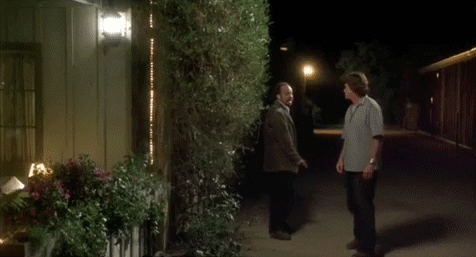5 reasons why we love merlot
It’s what you might call the black sheep of the wine world — but for no good reason. Merlot has a bit of an unfortunate reputation for being a fairly run-of-the-mill red without any real personality (you might’ve heard it described as a wine only people who don’t know wine would drink), but nothing — we repeat, nothing! — could be further from the truth.
We’re setting the record straight on this woefully vilified vino. Here are five reasons why we love merlot — and why you should, too.
Because even Hollywood couldn’t keep it down
Merlot took a real whack in the wake of Alexander Payne’s award-winning indie masterpiece Sideways, which famously features Paul Giamatti loudly screaming, ‘I am not drinking any f***ing merlot!’

via GIPHY
Such is the power of celebrity that sales of merlot actually declined two percent after the film’s premiere — and the grape took on a not-so-generous persona as lower-quality.
But even the ‘Sideways Effect’ can’t keep a good man (or merlot) down, it seems. Sales are back up thanks to folks in the know, and we’re pretty psyched about that.

via GIPHY
Because it’s a foodie’s best friend
Here’s another bummer of a misconception about merlot that we’re gunning to change: that it’s overly sweet, not well-balanced, and all-around ‘meh.’
Think again, mofo! Merlot’s actually what we would consider the hands-down crowd-pleaser of the wine world, with oh-so-smoothness, lower acidity, a nice mellow fruit-forward nature, and just the right amount of sweetness — all of which combine for a truly sensational food wine.

via GIPHY
You can pair merlot with dishes that run the gamut from light to rich. Chicken, pork, steak, even roast veggies? You got it.
Because it’s French for ‘little blackbird’
And isn’t that just the cutest damn thing you’ve ever heard? A fitting superlative for the underrated gem that positively sings (#sorrynotsorry) with fruity punch and power, the name is derived from merle (blackbird) and is believed to be a reference to the deep blue-black inkiness of merlot grapes.

via GIPHY
Because it’s one of the noble grapes
In the storied lore of wine, six varietals originated the status of ‘noble grape’: cabernet sauvignon, pinot noir, chardonnay, riesling, sauvignon blanc, and — today’s hero — merlot.
Now, there are 18 noble grapes (their ranks have grown over the years to include the most widely planted varietals in the world’s major production regions) — but the OGs were little beauties historically used to make the planet’s most highly regarded vino.
So the next time you’re feeling a bit regal? Pour a glass of merlot to complete your coronation. Yas, queen.

via GIPHY
Because it wears many cloaks
Merlot is one of those grapes that seriously changes form depending on where it’s grown. While all merlot shares a similar pleasant fruit-forwardness and a smooth mouthfeel, the specific flavours and characteristics really vary based on the climate of the source vines.
Cooler-climate merlot tends to be heavier on the purple and black fruits, leaning into those juicy and complex plum, blackberry, and violet notes. Warm-climate merlot, on the other hand, sees red; we’re talking ripe, ripe, and riper strawberry, raspberry, and cherry.

via GIPHY
Wanna step up your wine game? Read our ultimate guide to red wine here - from barbera to saperavi and everything in between.
